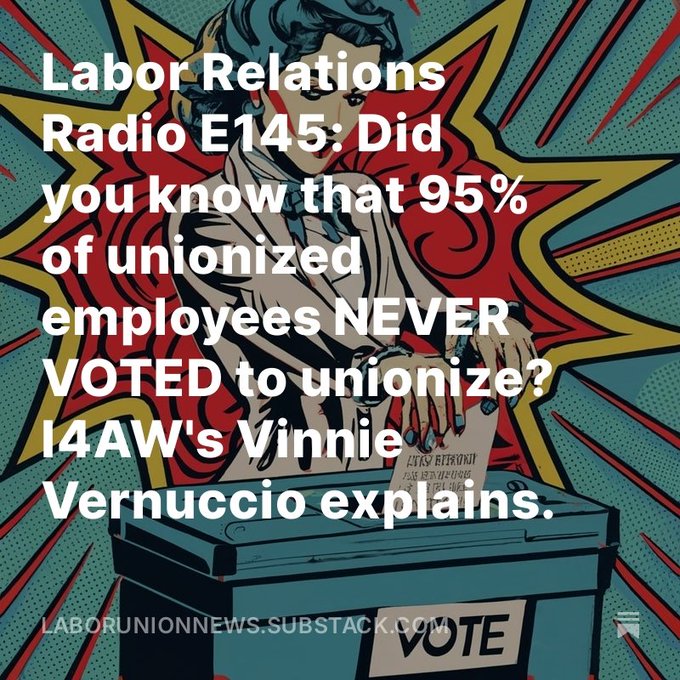Posts tagged Heritage Foundation

Testimony: Rachel Greszler: Labor Law Reform Part 1: Diagnosing the Issues, Exploring Current Proposals
October 10, 2025 // SummaryToday’s challenges—from the rise of artificial intelligence to the expansion of independent work and the growing demand for flexibility, autonomy, and new skills—necessitate modernized labor laws that are pro-worker and pro-employer, regardless of the type of workplace. Heavy-handed government interventions and attempts to bring back the 1950s’ ways of work are not the answers. American labor laws should preserve the freedom, dignity, and opportunity that make American work exceptional.

Teamsters president notes ‘positive change’ with growing Republican union support in Senate testimony
October 9, 2025 // Rachel Greszler, senior research fellow at The Heritage Foundation, said the complexity of collective bargaining agreements means that both workers forming a union and the employer need ample time to consider their implications for the future of the company and its workforce. "When you have a first contract, especially if you have a company that has never been involved in negotiations or a union, that it's the first time that they're representing workers, they need to understand all the issues," she explained. She also said contracts like the United Auto Workers union's agreements with automakers such as Ford can run thousands of pages when accounting for memorandums of agreement, with several hundred items covered under the bargaining agreement.
White House withdraws Antoni’s nomination to lead BLS
October 1, 2025 // “Dr. EJ Antoni is a brilliant economist and an American patriot that will continue to do good work on behalf of our great country," a White House official said in a statement, promising the president will announce a new nominee "very soon." The Senate committee overseeing the Labor Department never scheduled a confirmation hearing, and on Tuesday, Republican Senator Lisa Murkowski of Alaska said she remained concerned about Antoni's nomination. A person familiar with the nomination said several other Republicans expressed similar hesitation.
Unions don’t deliver for workers
July 11, 2025 // Take the recent UPS layoffs. In August 2023, the Teamsters Union touted its new UPS contract as a historic victory, claiming historic wage increases and increased benefits. Fast forward to January 2024, when UPS announced it was eliminating 12,000 jobs. Just a year later, it said it was cutting its delivery business with Amazon in half by the second half of 2026 and was aiming to shutter 10% of its buildings. Why the cuts? Because the union’s monopoly bargaining power allows it to demand wages that make it tough for companies to stay competitive. When costs climb, even giants like UPS have little choice but to cut jobs or invest less in the future. The UPS saga is a shining example of what the Mercatus report highlights: union power can backfire, leaving workers worse off in the long term.
Sen. Fazio to Union Boss ‘Don’t California My Connecticut’
April 12, 2025 // The evidence isn’t anecdotal anymore — it’s a nationwide pattern. According to the Heritage Foundation, “About 2.8 million more Americans moved out of high-tax states than moved to high-tax states between April 2020 and July 2023.” The migration wasn’t limited to CEOs and tech moguls: “This pattern is true of all income groups, though this pattern is especially true of those making $200,000 or more annually.” In fact, between 2020 and 2023, “The 10 states that have the highest taxes as a share of state GDP… lost 2.3 million residents,” while the 10 lowest-taxed states gained over 2.1 million. High-income individuals, the very people targeted by Connecticut’s proposed capital gains surcharge and mansion tax, are by far the most mobile: “There are nearly 60 people making $200,000 or more who move out of high-tax states for every 40 who move in.” These aren’t people looking to dodge minor inconveniences. They’re voting with their feet — despite the high costs of relocation

Workers at Defense Health Agency spent $3.3 million and 87,000 hours working on their own union benefits
April 7, 2025 // Federal unions are restricted from negotiating benefits and pay by the Federal Service Labor Management Relations Statute. Instead, benefits and pay are determined by law set by Congress and federal regulations. But federal unions can negotiate over more minor aspects of working conditions. “This includes things like the height of cubicle panels, securing designated smoking areas on otherwise smoke-free campuses, and the right to wear Spandex at work,” Rachel Greszler, a senior research fellow on workforce and public finance at the Heritage Foundation, previously told The Post.
What Trump’s win means for the federal workforce
November 6, 2024 // That’s because Trump has vowed to revive Schedule F, a controversial abortive effort at the end of his first term to strip the civil service protections of potentially tens of thousands of career federal workers in “policy-related” positions, effectively making them at-will employees. Trump and many of his former staffers have frequently bemoaned that “rogue bureaucrats” inhibited his policymaking power during his first stint in the White House. Though President Biden quickly rescinded Schedule F when he took office in 2021—before any positions could be converted out of the federal government’s competitive service—that hasn’t stopped Trump and his allies from working on the initiative in absentia. Both the Heritage Foundation and America First Policy Institute, which have organized dueling unofficial transition projects have endorsed reviving Schedule F, going so far as to creating lists of upwards of 50,000 current career civil servants to strip of their removal protections and threaten with termination.

Labor Relations Radio E145: Did you know that 95% of unionized employees NEVER VOTED to unionize? I4AW’s Vinnie Vernuccio explains.
September 4, 2024 // As Americans, every two, four, or six years, we head to polls to cast our ballots for who we want to represent us. For unionized workers in the private sector, the vast majority never voted to unionize. According to a new study [in PDF] by the Institute for the American Worker (I4AW), 95 percent of private sector union workers under the National Labor Relations Act (NLRA) are represented by a union they have never voted for.
How More Than 200 Employees Have Been Forced Into a Union Only 8 of Them Voted For
January 18, 2024 // The union filed an application for an election when the company was in its infancy and there were only 14 eligible voters. At the time of the election, there were nearly 100 flight attendants, but through a loophole in the law, only the original 14 were allowed to vote, and of them, eight voted for the union. Since then, the company has continued to grow. Now, Avelo Airlines’ 200-plus flight attendants are saddled up with a union voted in by eight people. Think of that: More than 200 people have been forced into an affiliation with an entity that only eight of them embraced.
As Hollywood strike drags on, Biden’s relationship with unions becomes complicated
September 6, 2023 // For example, in the 2020 election, labor unions contributed $27.5 million to Biden’s campaign while his opponent, former President Donald Trump, received less than $360,000, according to Open Secrets. The states with the largest concentration of union workers are hardline Democratic states, like Hawaii, New York, Washington, Oregon, New Jersey and California. In 2022, 10.1% of American wage and salary workers belonged to unions compared to 20.1%, in 1983, signifying a large drop in membership. But this hasn’t translated to a drop in popularity for unions, at least according to recent polls.
